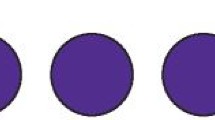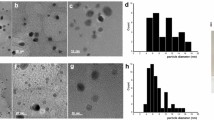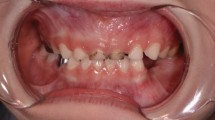Abstract
Design
Randomised controlled trial, double blind, in a community setting.
Intervention
School children with active caries in primary teeth and no pulpal exposure, fistula or decay in permanent teeth were chosen. Caries and unsupported enamel were left as found and cotton wool rolls were used for isolation. Two drops of NSF or one drop of water were applied to the tooth with a microbrush for two minutes, once in a 12-month period.
Outcome measure
At one week, five months and 12 months the presence of active caries, as classified using International Caries Detection and Assessment System (ICDAS II) criteria, was measured. If a blunt probe easily penetrated dentine with light force, active caries was recorded and taken to be a failure.
Results
One hundred and thirty primary teeth in 60 children with a mean age of 6.31 (± 0.60) were randomised. Sixty-three teeth were in the NSF group and 67 in the control group. After one week there were no losses, at the five-month follow up eight teeth were lost from the NSF group due to exfoliation or extraction and five from the control group. At twelve months a further five teeth were lost from the NSF group and 13 from the control group.
At the one week follow up there was a 19% failure rate in the NSF group compared to 100% in the control group. At the five month recall this was 27.3% NSF compared to 72.6% water and at the final recall there was a 33.3% NSF failure rate and 65.3% control failure rate. The preventative fraction at this point was 50% and the NNT 3.12. All were statistically significant results (p= <0.05).
Conclusions
The annual application of NSF solution was more effective in hardening and arresting dentine caries in primary teeth than the placebo. The effectiveness of NSF was found to be similar to silver diamine fluoride when applied once a year, but did not stain the dental tissue black and had no metallic taste. The application is simple, does not require a clinical setting and is inexpensive. NSF was demonstrated to be effective in arresting caries in children in poor communities, but further studies are required to investigate alternative protocols and for use in tooth sensitivity and root caries.
Similar content being viewed by others
Log in or create a free account to read this content
Gain free access to this article, as well as selected content from this journal and more on nature.com
or
References
Scottish Intercollegiate Guidelines Network. Dental interventions to prevent caries in children. A national clinical guideline, 138. Edinburgh; March 2014.
Marinho VCC, Worthington HV, Walsh T, Clarkson JE . Fluoride varnishes for preventing dental caries in children and adolescents. Cochrane Database Syst Rev 2013; 7: Art. No.: CD002279. DOI: 10.1002/14651858.CD002279.pub2.
Peng JJ, Botelho MG, Matinlinna JP . Silver compounds used in dentistry for caries management: a review. J Dent 2012; 40: 531–541.
Author information
Authors and Affiliations
Additional information
Address for correspondence: Valdeci Elias dos Santos Jr, Rua São Sebastião 417 #101, CEP 54410500, Jaboatão dos Guararapes, PE, Brazil. E-mail addresses: valdeciodonto@hotmail.com, valdeciodonto@gmail.com
Santos VE Jr, Vasconcelos Filho A, Targino AG, Flores MA, Galembeck A, Caldas AF Jr, Rosenblatt A. A new “silver-bullet” to treat caries in children--nano silver fluoride: a randomised clinical trial. J Dent 2014; 42: 945-951.
Rights and permissions
About this article
Cite this article
Burns, J., Hollands, K. Nano Silver Fluoride for preventing caries. Evid Based Dent 16, 8–9 (2015). https://doi.org/10.1038/sj.ebd.6401073
Published:
Issue date:
DOI: https://doi.org/10.1038/sj.ebd.6401073
This article is cited by
-
Effectiveness of nanosilver fluoride in arresting dental caries in children with one- year follow-up – a systematic review
Evidence-Based Dentistry (2024)
-
The antibacterial effect of nanosilver fluoride in relation to caries activity in primary teeth: a protocol for a randomized controlled clinical trial
Trials (2022)
-
Effect of Silver Diamine Fluoride on Reducing Candida albicans Adhesion on Dentine
Mycopathologia (2020)



